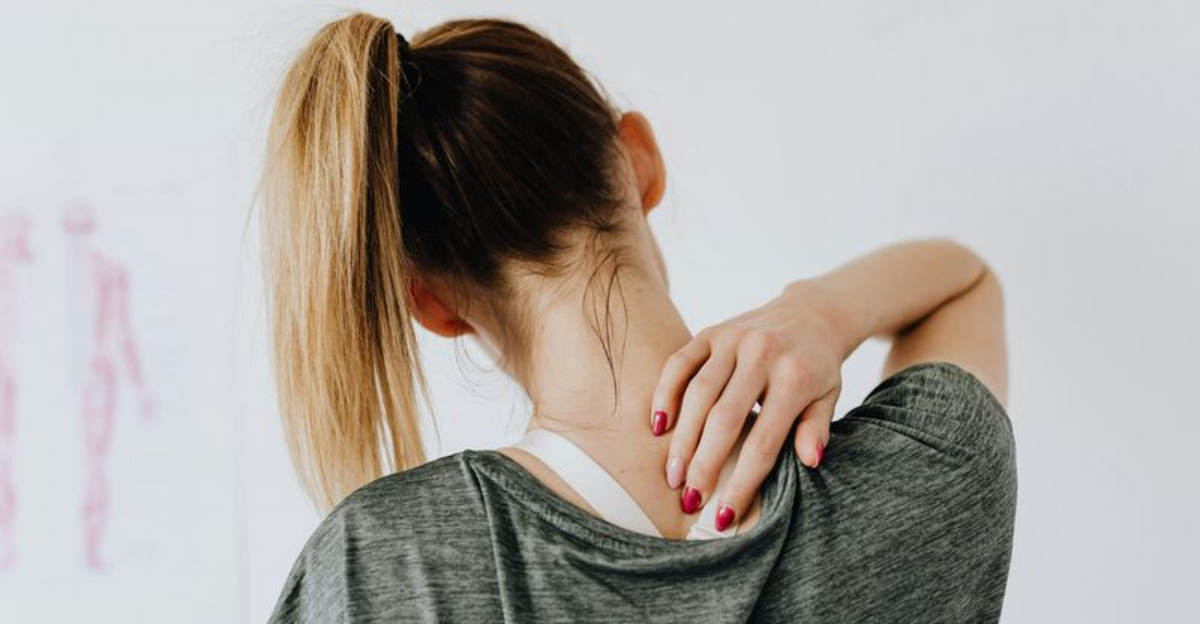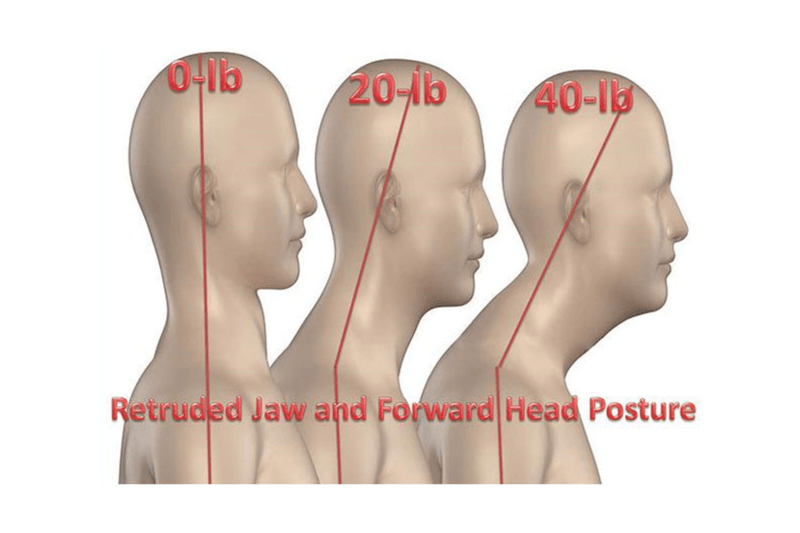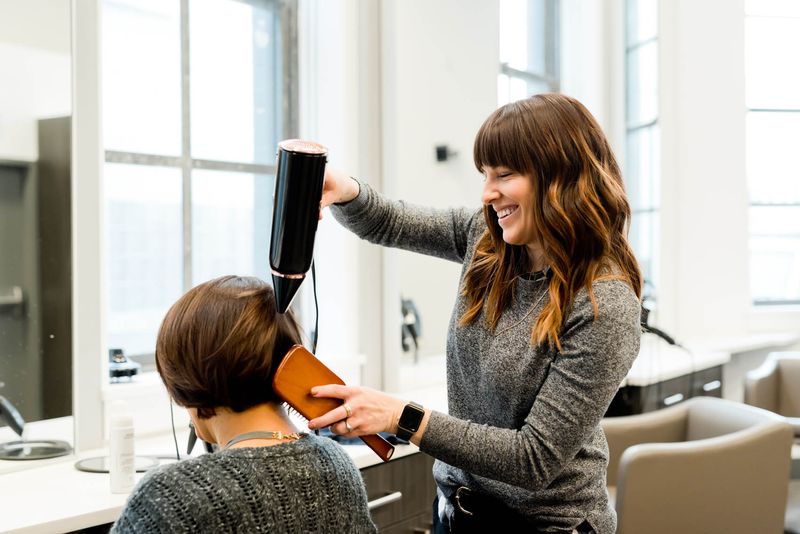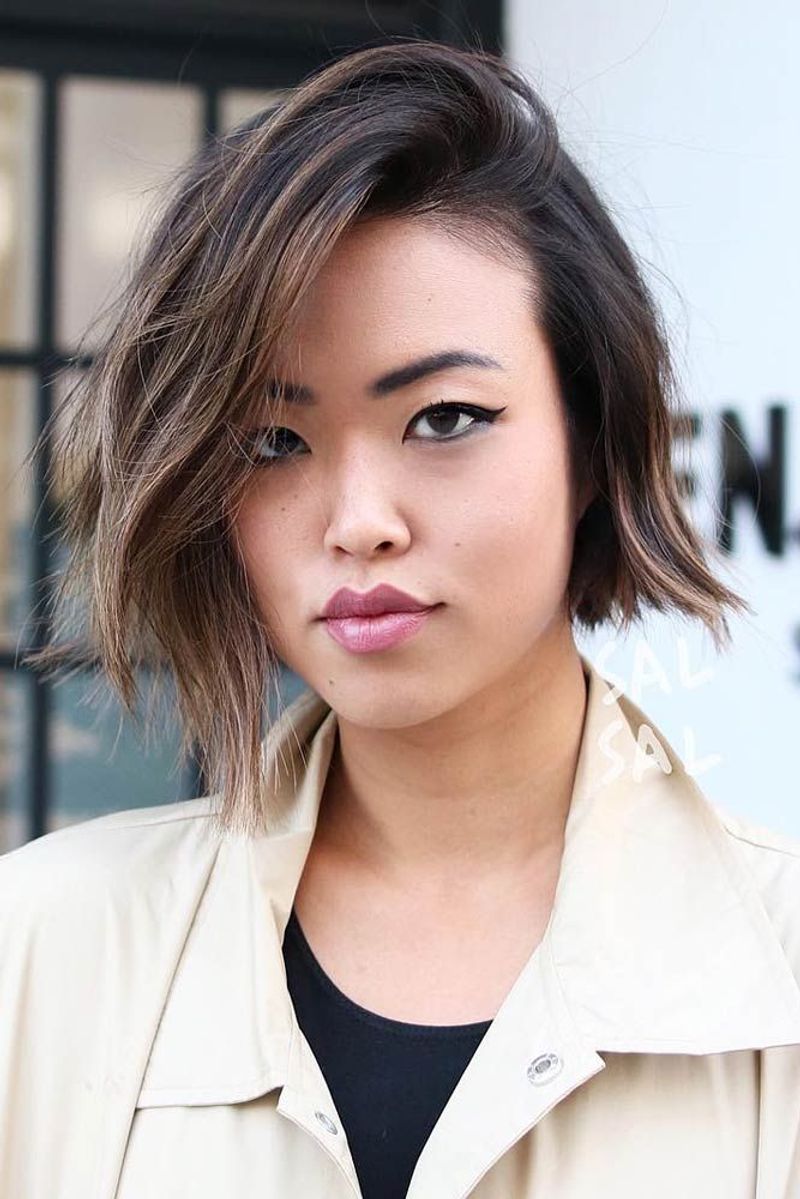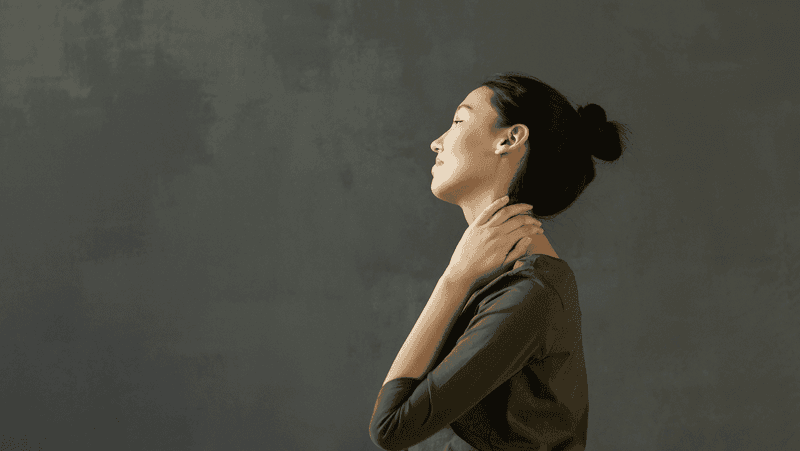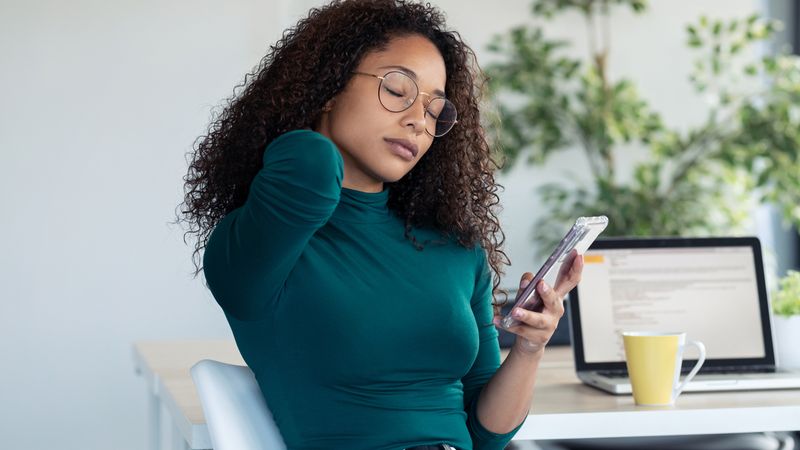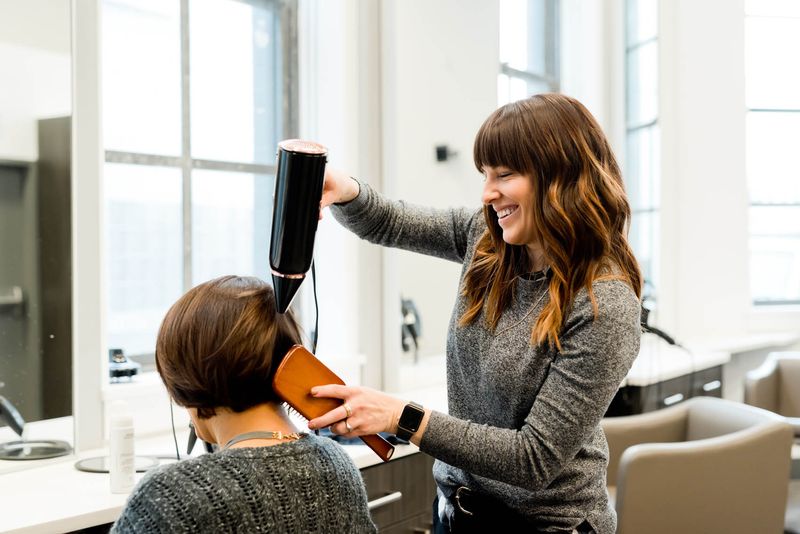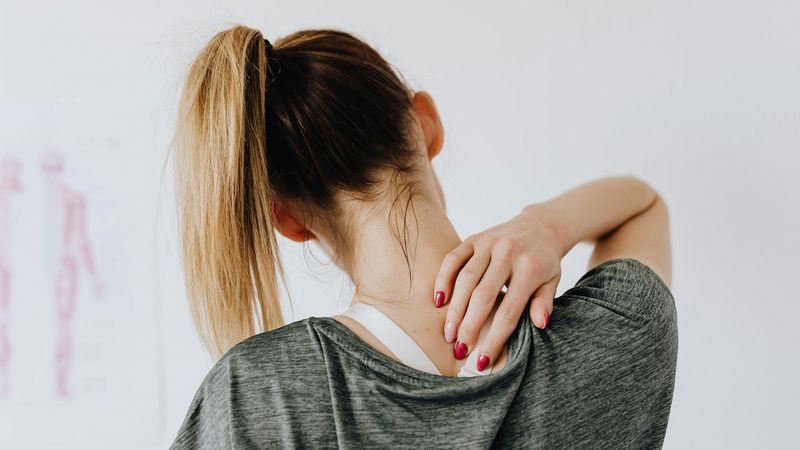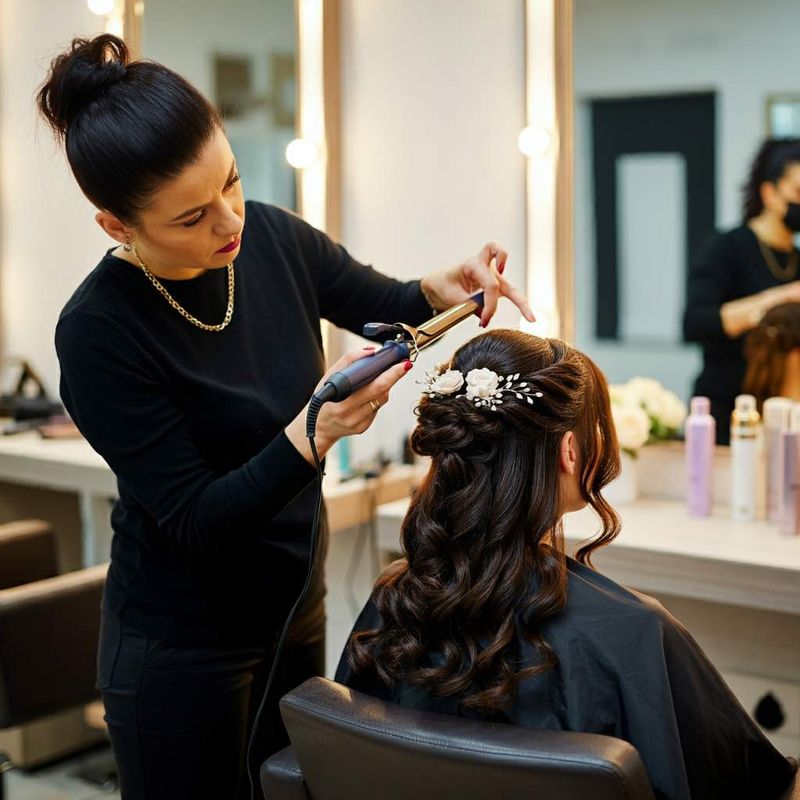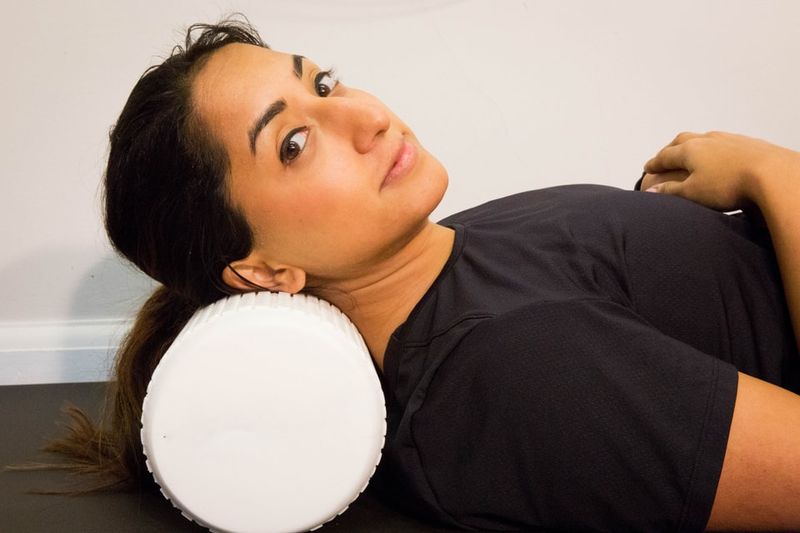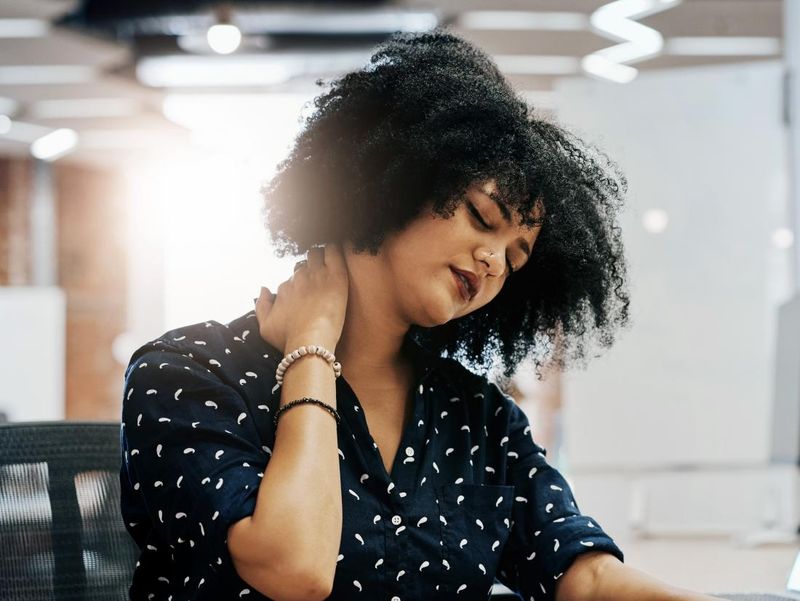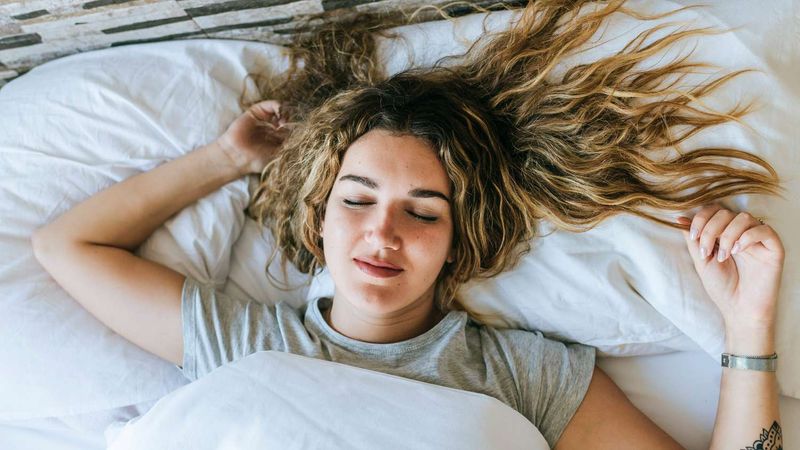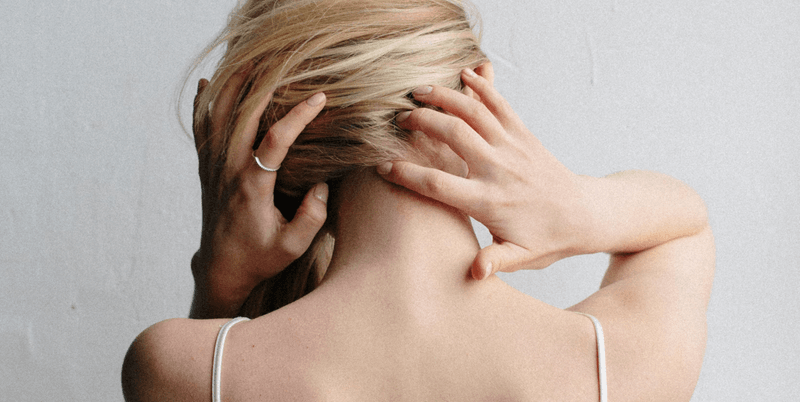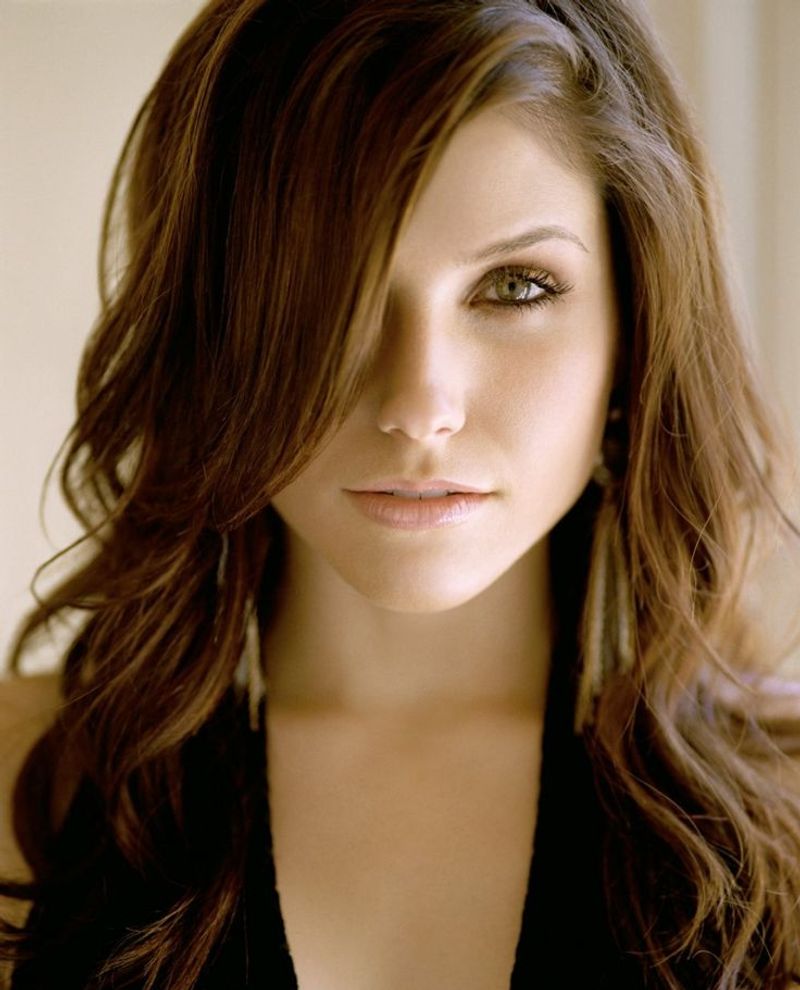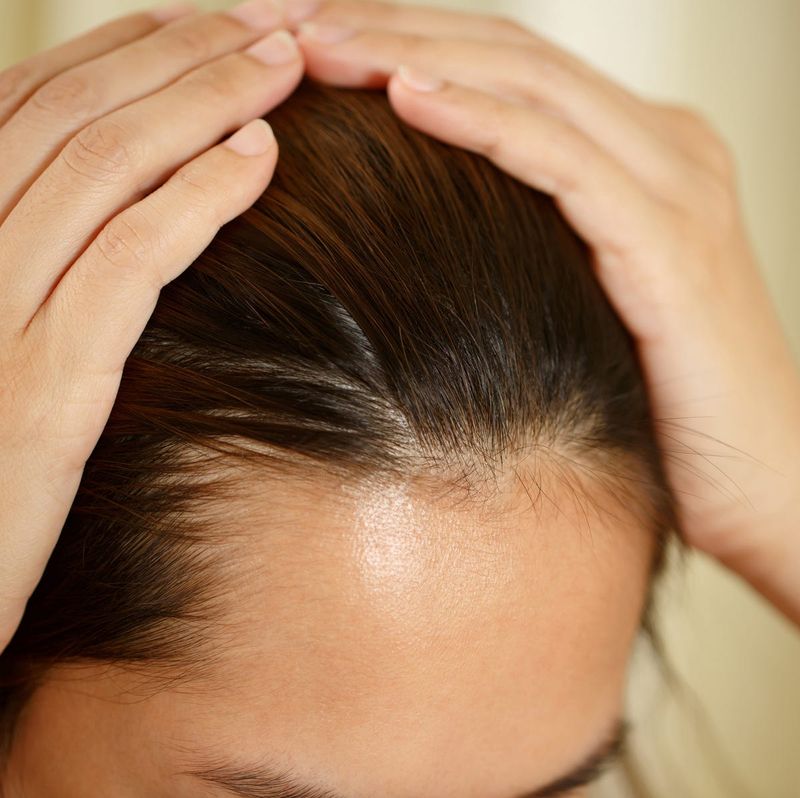Your hairstyle might be doing more than just framing your face – it could actually be changing how you hold your body. The weight, style, and maintenance of your hair can subtly influence your neck position, shoulder alignment, and overall posture throughout the day. Understanding these hidden connections between your hairdo and body alignment might help you prevent unnecessary strain and discomfort.
1. Heavy Extensions Pulling Your Head Forward
Those glamorous hair extensions might be giving you more than just added length and volume. The extra weight can pull your head forward, forcing your neck muscles to work overtime to keep your head upright.
Over time, this constant forward pull creates a domino effect down your spine. Your shoulders round forward, your upper back curves, and your entire posture shifts to compensate for the additional weight at the back of your head.
Related: -7 Straight-Hair Problems No One Talks About And 8 Easy Fixes That Shine
Many people don’t connect their neck pain or headaches to their extensions, but lightening your hair load could make a noticeable difference in how comfortable you feel by the end of the day.
2. Constantly Looking Down While Styling
Morning hair routines often involve several minutes of looking downward into mirrors or at styling tools. This repeated downward gaze trains your neck to hold a forward position that can persist throughout your day.
Your muscles develop memory patterns based on frequently held positions. When you spend significant time with your chin tucked down during styling, those muscles adapt and begin to hold that position even when you’re not actively styling.
Raising your mirror or using a hands-free setup can help maintain a neutral neck position while you perfect your look, preventing this subtle posture shift from becoming your new normal.
3. Lopsided Hairstyles Creating Muscle Imbalance
Rocking a side-swept hairstyle or asymmetrical cut might look fabulous, but your body notices the uneven weight distribution. When hair consistently hangs heavier on one side, you unconsciously adjust your head position to balance it.
This subtle tilt creates uneven muscle development in your neck and shoulders. One side works harder than the other, leading to strength imbalances that can affect your entire spine alignment.
Switching up your part occasionally or being mindful of how you distribute hair weight can prevent these imbalances from becoming problematic over time. Your stylist might even have suggestions for cuts that maintain your look without the postural consequences.
4. Tension Headaches From Tight Updos
Sleek ponytails and tight buns pull on your scalp and create tension that radiates across your head and down your neck. This constant pulling sensation triggers protective responses in your body, causing you to hunch your shoulders or jut your chin forward to relieve the discomfort.
The pain from tight hairstyles isn’t just superficial – it changes how you carry yourself throughout the day. Many people don’t realize they’re altering their natural posture to accommodate this scalp tension.
Loosening your updo even slightly can make a dramatic difference. Try using softer hair ties or positioning your ponytail differently to minimize the strain while maintaining your style.
5. Unconscious Hair Flipping Straining Your Neck
That habitual hair flip you do dozens of times daily isn’t just a confidence booster – it’s a repetitive motion that can strain your neck. The quick sideways or backward head movement creates subtle wear and tear on your cervical spine.
Your body compensates for this frequent motion by developing muscle imbalances. One side may become tighter while the other weakens, pulling your head slightly off-center and affecting your overall alignment.
Being mindful of how often you flip or toss your hair can reduce this unconscious strain. Alternatively, trying different hairstyles that keep hair securely in place might help break this habit while protecting your neck health.
6. Blow Drying Positions That Hurt Your Back
Achieving the perfect blowout often means contorting your body into awkward positions. Arms raised high for extended periods while bending your neck to see the mirror creates a perfect storm for upper body strain.
These positions put unusual stress on your shoulder joints and upper spine. When held repeatedly during your regular styling routine, they can contribute to chronic tension patterns that affect your standing and sitting posture.
Consider sitting down while blow-drying or using a wall-mounted dryer holder to maintain better body alignment. Taking brief breaks during longer styling sessions also gives your muscles a chance to reset before tension patterns set in.
7. Product Weight Making Your Head Droop
Heavy styling products can weigh down your hair more than you realize. When multiple products build up, that additional weight pulls your head forward throughout the day, especially if you have longer hair.
Your neck muscles fatigue as they work against this constant downward force. By evening, you might notice your chin jutting forward and shoulders rounding – classic signs of poor posture that developed gradually during the day.
Lighter formulations or applying products strategically just where needed can reduce this burden. An occasional clarifying treatment also removes buildup that might be weighing your hair down and affecting how you carry yourself.
8. One-Sided Styling Creating Spinal Twists
Many people habitually style their hair from the same side every morning. This creates a repeated twisting motion in your spine as you reach across your body to work on the opposite side of your head.
Over time, this one-sided movement pattern can lead to muscle imbalances and rotational stress on your vertebrae. Your body adapts to this repeated twist by developing stronger muscles on one side, potentially pulling your spine slightly out of alignment.
Switching sides occasionally during styling or positioning yourself differently in front of the mirror can distribute this movement more evenly. Small adjustments to your routine can prevent these subtle spinal rotations from becoming problematic postural habits.
9. Heavy Bangs Triggering Forward Head Posture
Thick, heavy bangs that partially obstruct vision can subtly change how you hold your head. Without realizing it, you may tilt your chin up slightly to see better, pushing your head into a forward position relative to your shoulders.
This forward head posture increases strain on your neck muscles and upper spine. For every inch your head moves forward from its balanced position above your shoulders, the effective weight on your spine increases dramatically.
Regular bang trims or sweeping them slightly to the side can help maintain clear vision without this compensatory head position. Being aware of this tendency also allows you to consciously correct your head position throughout the day.
10. Protective Hairstyles Creating Neck Tension
Braids, weaves, and other protective styles offer many benefits, but their weight can affect how you hold your head. Particularly when newly installed, these styles can be significantly heavier than your natural hair.
Your neck muscles must work harder to support this additional weight. Many people unconsciously adjust by tilting their head back slightly or hunching their shoulders, creating new tension patterns that can persist even after the style is removed.
Choosing lighter options or gradually working up to heavier styles gives your muscles time to adapt. Taking breaks between installations also allows your natural posture to reset before adding weight again.
11. Hair Length Influencing How You Sleep
Very long hair can affect your sleeping position in ways that impact your daytime posture. Many long-haired people avoid lying directly on their hair to prevent tangling, unconsciously developing side-sleeping habits with unusual neck angles.
These nighttime positions can create muscle imbalances that carry over into waking hours. One side of your neck may become tighter or more developed than the other, pulling your head slightly off-center during normal activities.
Using a silk pillowcase reduces friction and tangling, allowing for more natural sleeping positions. Loosely braiding long hair before bed also minimizes these position restrictions while protecting your hair and allowing your spine to maintain better alignment.
12. Hair-Touching Habits Rounding Your Shoulders
Constantly reaching up to touch, adjust, or play with your hair creates a repetitive forward shoulder motion. Your pectoral muscles tighten from this frequent forward reaching while upper back muscles weaken from being constantly stretched.
This muscle imbalance gradually pulls your shoulders forward and inward, creating the rounded shoulder posture associated with poor alignment. The more frequent your hair-touching habit, the more pronounced this effect becomes over time.
Becoming aware of how often you reach for your hair is the first step toward breaking this cycle. Hairstyles that require less adjustment can also reduce the unconscious urge to constantly touch and rearrange your locks.
13. Compensating For Hair-Blocking Vision
Hair that partially covers your eyes forces you to adjust your head position to see clearly. You might tilt your head back or to one side, creating unusual angles in your neck that can become habitual posture patterns.
These compensatory positions put strain on muscles that weren’t designed to hold your head at these angles for extended periods. Over time, this strain can lead to tension headaches and neck pain that further impact how you carry yourself.
Regular trims or using accessories to keep hair out of your eyes eliminates the need for these adaptations. Even slight adjustments to keep your vision clear can make a significant difference in preventing posture-related discomfort.
14. Wet Hair Weight Changing Your Morning Movement
Freshly washed hair can weigh significantly more than dry hair, especially for those with thick or long locks. This temporary weight increase changes how your head feels on your neck, often leading to compensatory movements during your morning routine.
Many people hunch their shoulders or tilt their head to manage this heavier-feeling hair. These movement patterns, though temporary, can set the tone for your body alignment throughout the day.
Using a microfiber towel to remove excess water before starting your day reduces this weight. Being mindful of how your posture changes when your hair is wet also helps you consciously correct these temporary adaptations before they influence your entire day.
15. Uneven Haircuts Tilting Your Head
An asymmetrical or uneven haircut might look stylish, but your body senses the weight difference. Your proprioception system – which monitors body position – detects even subtle differences in how hair weight is distributed around your head.
In response, you may unconsciously tilt your head to make the haircut feel more balanced. This slight tilt, when maintained throughout the day, creates uneven muscle development in your neck and upper back.
Regular trims to maintain the intended shape of asymmetrical styles can prevent unintentional unevenness. Being aware of any tendency to tilt your head also allows you to periodically check and correct your alignment, preventing temporary adaptations from becoming permanent posture changes.

